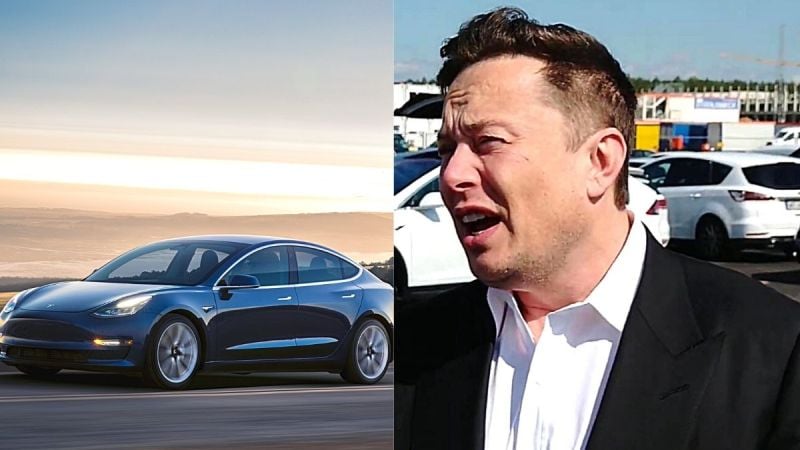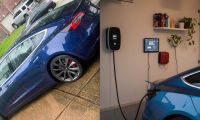In a recent social media post, Gary Black, the Managing Partner of The Future Fund, posed a thought-provoking question: "If $TSLA sells every EV it makes, why does it need to cut the price?" This query sparked a lively discussion about Tesla's marketing strategy and the company's path to achieving mass adoption of electric vehicles (EVs).
In this article, I will delve into the debate, analyze the importance of price and education in Tesla's journey toward sustainable energy, and provide insights into the company's efforts to expand its market share.
The Power of Tesla's Product
It's no secret that Tesla has created a buzz in the automotive industry with its innovative and high-quality electric vehicles. With a diverse lineup that includes the Model 3, Model Y, Model S, and Model X, Tesla offers something for nearly every consumer. But despite producing top-notch EVs that are in high demand, Tesla still maintains a relatively modest market share of just 2.4%.
Tesla's Pricing Conundrum
One might wonder why a company with such stellar products would need to adjust its pricing strategy. Tesla's decision to lower prices is not an indication of product quality but rather a strategic move to make EVs more accessible to a wider audience. The electric vehicle market is still evolving, and affordability remains a significant barrier for many potential buyers.
Tesla's vehicles have a reputation for being on the higher end of the price spectrum, with some models starting at over $50,000. While this price point attracts early adopters and environmentally conscious consumers, it does not necessarily capture the broader market. To accelerate the transition to sustainable energy, Tesla needs to reach beyond this niche.
The Role of Education
Black emphasizes in his X social media post the importance of educating consumers about the benefits of EVs. Tesla's products offer advantages that extend beyond their environmental benefits. To reach a broader audience, Tesla needs to communicate these advantages effectively:
- Affordability: Contrary to popular belief, Teslas start at prices under $40,000, making them competitive with traditional internal combustion engine vehicles.
- Charging Convenience: Tesla has built a robust Supercharger network, providing convenient and fast charging options.
- Longer Range: Tesla's EVs boast impressive range capabilities, reducing the need for frequent charging.
- Fun and Speed: Tesla vehicles are known for their exhilarating acceleration and performance.
- Over-the-Air Updates: Tesla's unique ability to update and enhance vehicles remotely keeps them fresh and up-to-date.
- Safety: Tesla prioritizes safety, earning high marks in crash tests and featuring advanced driver-assistance systems.
- Cost-Efficiency: Electric vehicles have lower operating and maintenance costs compared to traditional cars.
Educating consumers about these advantages can dispel misconceptions and make Tesla's products more appealing to a broader demographic.
Price vs. Education: A Balanced Approach
The debate between price and education is not an either-or proposition. Tesla can benefit from a balanced approach that combines both strategies. Here's why:
-
Price: Lowering the cost of entry for Tesla's vehicles makes them more accessible to a wider range of consumers. This can be achieved through incentives, tax credits, or competitive pricing, especially in the mid-range market.
-
Education: Investing in comprehensive educational campaigns can help demystify electric vehicles and dispel myths. Tesla can highlight the long-term cost savings, environmental benefits, and overall advantages of EV ownership.
Tesla's mission to accelerate the world's transition to sustainable energy requires a multifaceted strategy. By using both price adjustments and educational efforts, Tesla can effectively target different consumer segments and expand its market share.
In the quest to accelerate the adoption of electric vehicles and sustainable energy, Tesla faces the challenge of increasing its market share beyond early adopters. While Tesla's products are exceptional, they need to be more accessible to the masses. Lowering prices is one part of the equation, but education plays an equally vital role.
Tesla's journey toward mass adoption involves not just selling cars but also conveying the benefits of electric vehicles to a broader audience. By combining competitive pricing with comprehensive education, Tesla can reach its goal of accelerating the world's transition to sustainable energy. In this evolving landscape, a flexible strategy that adapts to changing market dynamics will be key to Tesla's success.
Opinion: It's clear that Tesla's unique position in the EV market gives it the opportunity to lead the charge in sustainable transportation. However, the company must be agile and responsive to consumer needs and perceptions. Price adjustments and education are powerful tools in Tesla's arsenal, and using them wisely can drive the company's mission forward.
Why It Matters: Tesla's success in expanding its market share and accelerating the adoption of electric vehicles is crucial not only for the company but also for the broader goal of transitioning to sustainable energy sources. By addressing affordability and education, Tesla can pave the way for a greener future in the automotive industry.
Armen Hareyan is the founder and the Editor in Chief of Torque News. He founded TorqueNews.com in 2010, which since then has been publishing expert news and analysis about the automotive industry. He can be reached at Torque News Twitter, Facebok, Linkedin and Youtube. He has more than a decade of expertise in the automotive industry with special interest in Tesla and electric vehicles.












